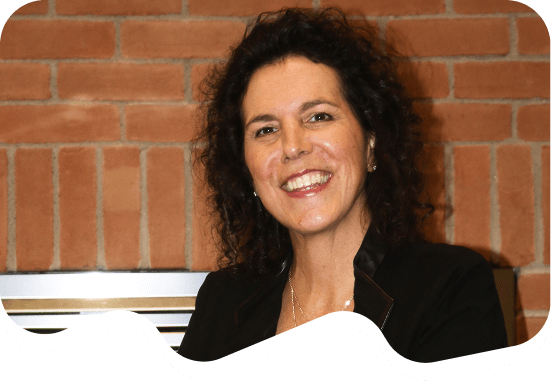
Making a choice between Google Ads and Facebook Ads isn’t just a budgeting decision; it’s a strategic one.
Both platforms are powerful tools that can drive business growth, but they operate on very different principles.
One captures active intent; the other creates opportunity. Understanding how each works, what they’re best suited for, and how they fit into your customer journey can make the difference between wasted spend and strong returns.
This guide takes a closer look at both platforms, not in competition, but in context, because the smartest advertisers don’t choose one or the other. They decide when, where, and how to use each.
The Real Difference: Search vs. Discovery
The most significant distinction between the two lies in how users interact with each platform.
Google Ads: Reaching Customers Who Are Already Looking
Google Ads is built around search intent. When someone types “best waterproof hiking boots” into Google, they’re not casually browsing. They’re actively searching for a solution. This is where Google Ads excels, placing your brand in front of people who are ready to take action.
Because of that intent, clicks tend to convert faster. But that also means competition is higher, and so are the costs. Still, if your business delivers a product or service people already know they need, Google Ads can provide high-intent traffic that’s primed to convert.
Facebook Ads: Sparking Interest That Wasn’t There Yet
Are Facebook ads worth it? Facebook Ads, spanning Facebook, Instagram, Messenger, and the Audience Network, work differently. People don’t open Instagram to shop for accounting software or kitchen appliances.
They scroll to relax, to connect, to be entertained. So, your ad needs to earn its space. It has to stop them mid-scroll with something visually engaging or emotionally resonant.
That’s why Facebook excels at generating demand, especially for products that are discovery-driven. Think fashion, wellness, and home décor, categories where aesthetics, identity, and lifestyle play a bigger role than urgency.
Where Google captures existing demand, Facebook creates it. Both are valuable. The question is: where does your customer start?
How Google Ads Actually Works
Google Ads operates on a pay-per-click (PPC) model. You set bids on keywords and specific phrases people type into the search bar, and your ad appears when those queries match.
But it’s not just about who bids the highest. Google also considers relevance, quality, and expected click-through rate. That means smart targeting and well-written ads can outperform larger budgets.
Search ads are the most common format. These are the short, text-based listings that appear at the top of the results page. They’re most effective when your audience is already aware of the problem and seeking solutions.
Then there are Shopping ads, which are product listings with images, prices, and reviews that appear directly in search results.
For e-commerce, they’re incredibly effective at catching buyers right before they make a purchase. Beyond search, you also have access to Google’s Display Network and YouTube.
These channels allow you to use image, banner, and video ads to build awareness, retarget site visitors, or re-engage people who’ve abandoned a cart.
How Facebook Ads Work and Why It’s So Powerful
Facebook Ads, part of Meta’s advertising ecosystem, takes an entirely different approach. Instead of capturing intent, they’re designed to target behavior.
What people like, what they watch, where they live, and what life stage they’re in, Facebook’s ad platform builds a detailed portrait of every user, then gives advertisers the tools to reach those individuals with precision.
While Facebook offers multiple campaign objectives, such as awareness, traffic, engagement, and conversions, the real magic lies in how well it understands your audience. You’re not targeting keywords. You’re targeting people.
You can choose to show your ad to new parents in suburban Chicago who recently moved, follow fitness brands, and have expressed interest in organic food.
You can build lookalike audiences that mirror your best customers. You can retarget people who viewed your product page but didn’t complete a purchase.
You can achieve all of this using formats designed to blend seamlessly into the user’s scrolling experience: images, videos, carousels, stories, reels, and Instant Experiences that expand into full-screen mobile storefronts. It’s native, immersive, and, when done right, incredibly persuasive.
Cost and ROI: What You’re Really Paying For

Let’s talk numbers, but not just to compare cost-per-click, because what really matters is what you’re getting in return.
The Economics of Google Ads
Is Google Ads expensive? Google Ads generally cost more. The average CPC hovers around $5.26, but in high-competition industries, such as finance, law, or healthcare, it can rise significantly above that.
But you’re paying for users who are already shopping. They’re already in decision-making mode. When someone types “emergency plumber near me,” they’re not window shopping; they need a solution.
That’s why Google Ads tends to convert faster and at higher rates. The traffic may be more expensive, but it’s also more likely to become revenue.
The Economics of Facebook Ads
Are Facebook ads expensive? Facebook Ads are more affordable upfront. The average CPC is around $1.72, and in many industries, such as food, beauty, or entertainment, it’s even lower. But while you might get more clicks for your dollar, you’re usually dealing with colder traffic.
That means conversions take longer, and you often need to invest in retargeting to close the loop. Still, the potential ROI can be excellent, especially if you’re focused on building brand equity or expanding your reach to new audiences.
When to Use Google Ads
If your audience already knows they need what you offer, Google is your best bet. This is especially true for service-based businesses, niche e-commerce platforms, SaaS companies, or any product with apparent demand.
People looking for “CRM for real estate teams” or “affordable laptops for students” are already halfway down the funnel. Your goal is to be the first (and best) option they see.
Google is also ideal for competitive bidding on branded keywords related to your own business or that of your competitors.
If someone types your brand name, you should own that top spot. If they’re searching for your competitor, you have a chance to intercept the sale.
Search isn’t your only tool. Shopping ads perform exceptionally well for product-based searches, while Display and YouTube are great for remarketing or nurturing longer buying journeys.
When to Use Facebook Ads
Facebook Ads are where you start the conversation. If you’re launching a new brand, entering a new market, or selling something that’s more about aspiration than necessity, Facebook is where you plant the seed.
It’s where you show people what’s possible, spark curiosity, and build relationships over time. This is especially effective for visually compelling products, such as those in the fashion, home goods, wellness, beauty, and lifestyle categories.
However, it’s also a powerful platform for B2B companies to run thought-leadership videos, brand storytelling campaigns, or community-building initiatives.
Facebook is also unmatched for retargeting. With the Meta Pixel, you can create highly personalized campaigns that follow people who have interacted with your site or social profiles, nudging them toward a specific action, whether it’s signing up, making a purchase, or booking a call.
Should You Use Both? Absolutely. Here’s Why
The most innovative brands aren’t choosing between Facebook and Google. They’re using both intentionally and strategically because customers don’t move through a neat, linear funnel; they scroll, click, compare, abandon, and return.
They see your product in an Instagram Story, forget about it, and then Google it days later when they remember or they discover you in a Google search, then head to Facebook or Instagram to check your social proof.
A Full-Funnel Strategy That Works
Utilize Facebook to introduce your brand and capture the attention of your target audience. Show up in the feed with video or carousel ads that tell your story, showcase your products, or highlight social proof. Build interest, drive traffic, and get people to your site.
Then, let Google pick up the baton and retarget those visitors with Shopping Ads or Display campaigns. Capture branded search traffic when they’re finally ready to buy. Meet them with a solution when they type your product name into the search bar.
This approach gives you control at every touchpoint, from the spark of awareness to the moment of conversion.
Allocating Your Budget Across Platforms
Your budget split depends on your business stage. If you’re in launch or growth mode, lean more heavily on Facebook; allocate 60% or more of your budget toward building visibility and attracting traffic. Use the remaining 40% to capture branded search traffic and retarget with Google.
If you’re more established, flip the ratio. Prioritize Google to capture high-intent buyers and keep Facebook active for retargeting, product launches, and customer engagement.
The key is to measure consistently and track ROAS, CAC, time to conversion, and attribution across both platforms.
Utilize tools like Google Analytics 4 or Shopify Audiences to gain a comprehensive understanding of performance, not just last-click attribution.
Which Platform Works Best for Your Industry?

Is Google Ads better than Facebook Ads? Different businesses require different advertising strategies, and that starts with understanding how your product fits into your customer’s daily decision-making process.
High-Intent, Problem-Solving Industries
If you’re in a category where urgency drives action, such as HVAC repair, legal services, dental care, insurance, or emergency tech support, Google Ads should be your frontline tool.
In such cases, individuals are actively seeking assistance. You don’t want to show up after they’ve already hired someone else. You want to be first, visible, and relevant.
SaaS products and service-based B2B companies also tend to perform better on Google because decision-makers are searching for specific tools, platforms, and solutions.
Visual, Aspirational, Lifestyle-Based Brands
If your product is about aspiration, identity, or lifestyle, such as fashion, skincare, home décor, wellness, travel, or fitness, Facebook and Instagram provide the creative canvas and audience segmentation to help you thrive.
People rarely search for things they didn’t know they needed. However, when you tell a compelling story with bold visuals and the right targeting, you can create desire and convert it over time.
For new brands, Facebook is often the better launchpad. But pairing it with retargeting via Google helps close the loop when awareness turns into intent.
Hybrid Models and Multichannel Buyers
Some industries live in both worlds. For example, a home fitness brand might generate interest through Instagram videos and influencer content, then close the sale when someone Googles “adjustable dumbbells with fast shipping.”
A meal delivery service might build awareness through Facebook carousel ads and convert through branded search campaigns.
In those cases, your marketing should mirror how people behave: cross-channel, multi-touch, and measured beyond the last click.
The Final Verdict: Integration Over Either-Or
If you’re looking for a definitive answer, the truth is that the best marketers don’t choose between Facebook and Google.
They understand the purpose of each and use them in tandem to build a complete customer journey. Google Ads is your go-to for harvesting demand. It’s the tool you use when your buyer is actively searching, comparing, and ready to convert. It’s precise, fast, and conversion-focused.
Facebook Ads are where you shape perception. It’s your space for storytelling, community building, and nurturing interest that might not lead to a sale today but will down the line. It’s also one of the most cost-effective ways to scale awareness without blowing your budget.
Used together, they help you show up wherever your customer is, whether they’re searching for a solution or simply scrolling through their feed.
A Smarter Strategy Starts with Alignment
It’s not just about being on both platforms. It’s about using each for what it does best. Let Facebook introduce your brand.
Let Google help them take the next step. Let your data tell you where to double down. Great advertising doesn’t start with choosing a platform; it begins with understanding your audience and delivering the right message at the right moment, on the right screen.
If you’re ready to scale smarter, don’t just ask which platform is better. Ask how you can use both strategically, cohesively, and profitably.
If you ever need help managing both, you can reach out to us for assistance, as we are experts in leading ad campaigns that not only click but also convert.











